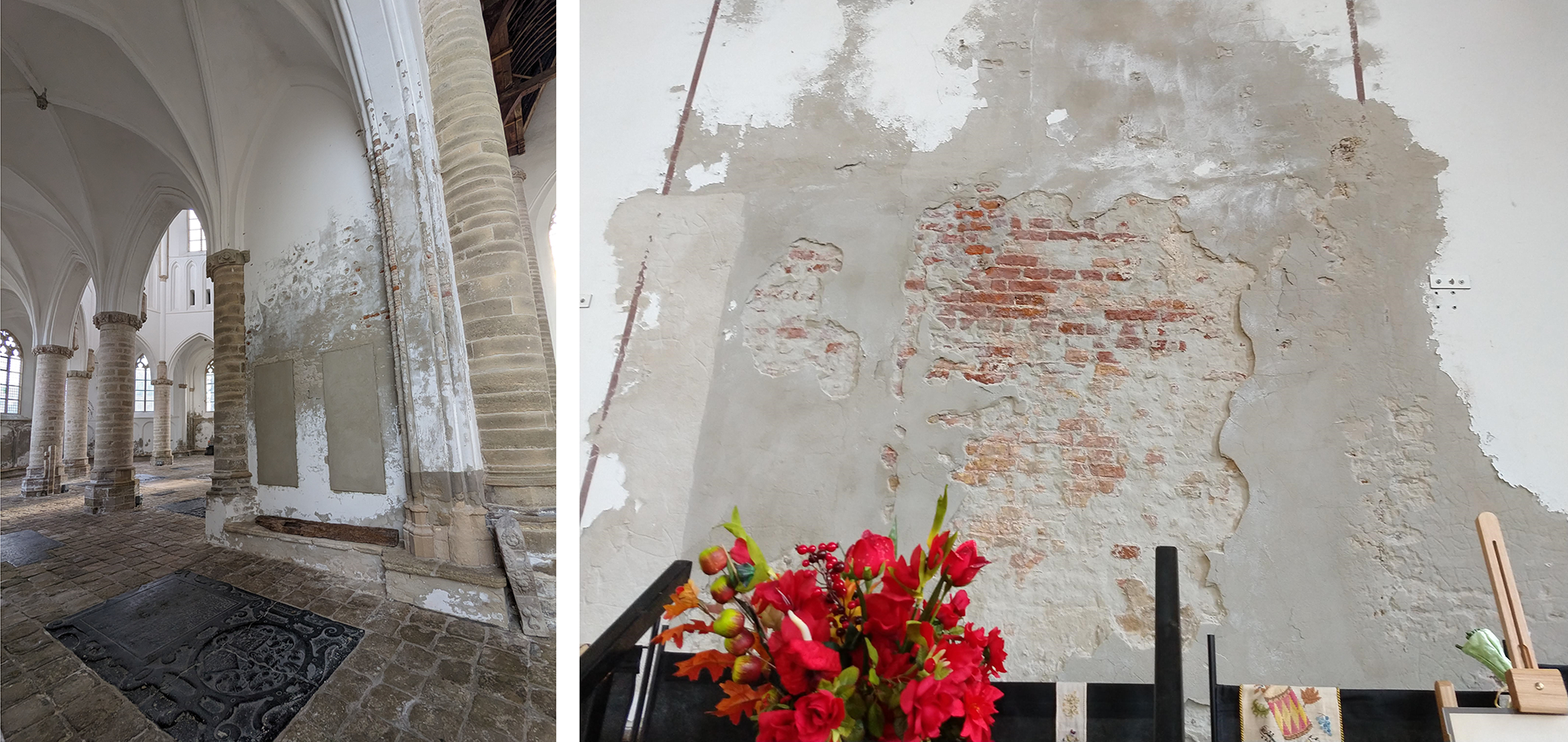Soluble salts that enter building structures via groundwater can be stopped by special salt inhibitors. Encapsulation in capsules prevents the premature washing out of these “anti-caking agents”, according to doctoral research by Ameya Kamat. He used a technique from the pharmaceutical industry for a controlled release of the inhibitors. This is an exciting innovation, especially for vulnerable monuments.
Salts penetrating porous building materials, such as masonry and stucco, can cause substantial damage. When moisture evaporates, salt crystals form. As a result, plaster layers and joints are crushed. Laboratory experiments have shown it possible to slow down this process with agents that prevent the formation of crystals, simply by mixing them into the lime mortar. This is a promising development, especially for mortars used in restorations and renovations. Indeed, many monumental buildings face this problem because salts enter plaster layers via rising damp. ‘For repairs to monuments, you cannot use any modern mortar. It has to be compatible with the existing materials, otherwise the damage will increase,’ says researcher Ameya Kamat. ‘That's why my research focused primarily on the use of salt inhibitors in traditional renovation mortars. How effective are these, and how can you prevent these inhibitors from being washed out prematurely? Because when that happens, it's a short-lived solution.’
Anti-caking agent in the walls
The Indian researcher, who is affiliated with the Faculty of Civil Engineering and Geosciences (CEG), ended up at BK through the research group Heritage & Architecture. Heritage researchers have long struggled with the problem of salts in renovation mortars. Kamat already knew a lot about it thanks to previous research in the Microlab of CEG.
To start, he investigated the extent to which salt inhibitors are actually effective in the laboratory. To different types of mortars he added his chosen inhibitor: the chemical compound sodium ferrocyanide. Sounds toxic, but is actually quite harmless because the toxic cyanide in it is bound to iron. The compound is also used as an anti-caking agent in table salt because it prevents crystals from forming. In accelerated aging tests, mortars with this addition were found to be much more resistant to damage from salt intrusion than mortar mixtures without it. Moreover, there was no discernible effect on mortar performance when 1 percent inhibitor was used.
A protective coat of biopolymers
His follow-up research on the washing out of the inhibitors turned out to be less positive. Sodium ferrocyanide dissolves very easily in water. When immersed, it therefore disappears from the test specimens at lightning speed. ‘Within ten days, eighty percent had been washed away,’ Kamat says.
He tackled this problem with a targeted drug release technique from the pharmaceutical industry. He used two oppositely charged biopolymers: large, naturally occurring molecules. He managed give the inhibitor a first coat using alginate, a substance extracted from seaweed. ‘It forms a net, so to speak, around the molecule,’ Kamat says. ‘When the acidity goes down, the meshes of this net open up.’
Since acidity in mortars is low anyway, he added an extra “guardian”. He immersed the mixture in a bath of chitosan - the same substance that makes up a crab's armor. When acidity decreases, this substance actually causes the net to contract. The capsules created in this way give a controlled release. When tested at various levels of acidity, they were found to provide excellent protection against washout of the salt inhibitors. In a cured mortar, he achieved similar results.
Finally, Kamat conducted accelerated aging tests in the laboratory to determine whether his encapsulated inhibitor still prevented salt damage. The test was a resounding success. Salt damage was found to be minimal, as was the amount of salt inhibitor washed out. Moreover, the capsules had no negative effect on mortar performance.
Kamat drew a comic to explain exactly how his finding works. Water, salt, the anti-caking agent and the researcher himself play leading roles in it.
Mortar manufacturers have since expressed interest in the innovative process. Industrial production is expected to be fairly straightforward. Use of agents for targeted release is a well-known process from the pharmaceutical industry, and costs are limited. ‘But a lot of research is still needed on the ideal chemical composition of the capsules. I leave that to the industry.’
Published: October 2024
More information
- All visual material in this article is made by and owned by Ameya Kamat.
- Ameya’s full thesis, called ‘Improving salt weathering resistance of hydraulic mortars with an encapsulated crystallisation inhibitor’, can be found in the repository of the TU Delft.
- Ameya Kamat defends his PhD thesis on Friday 25 October at 10:00.




